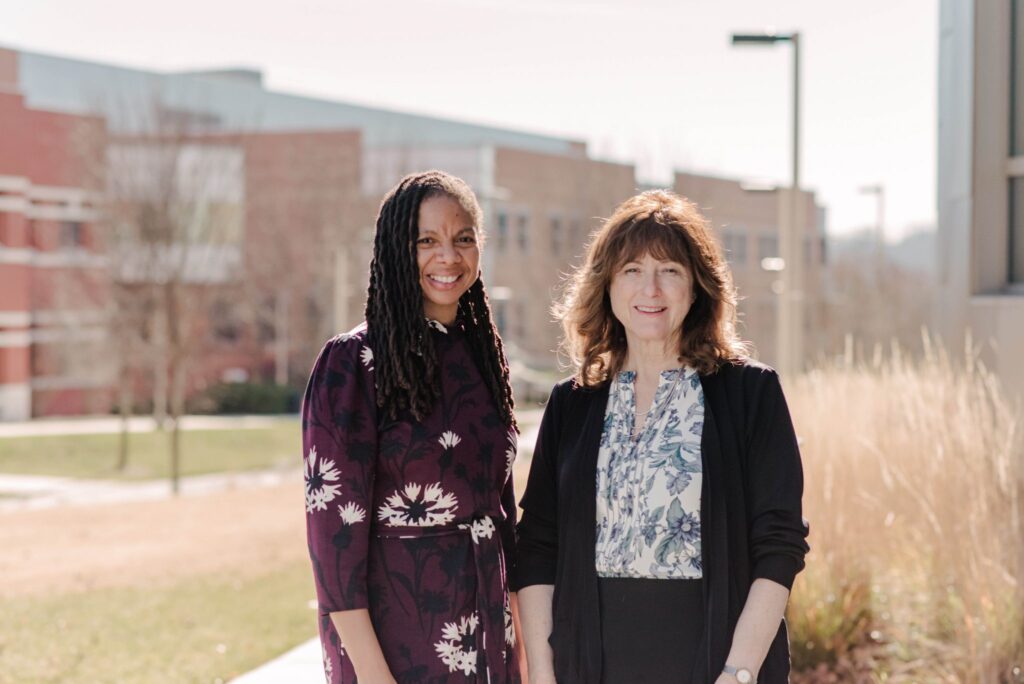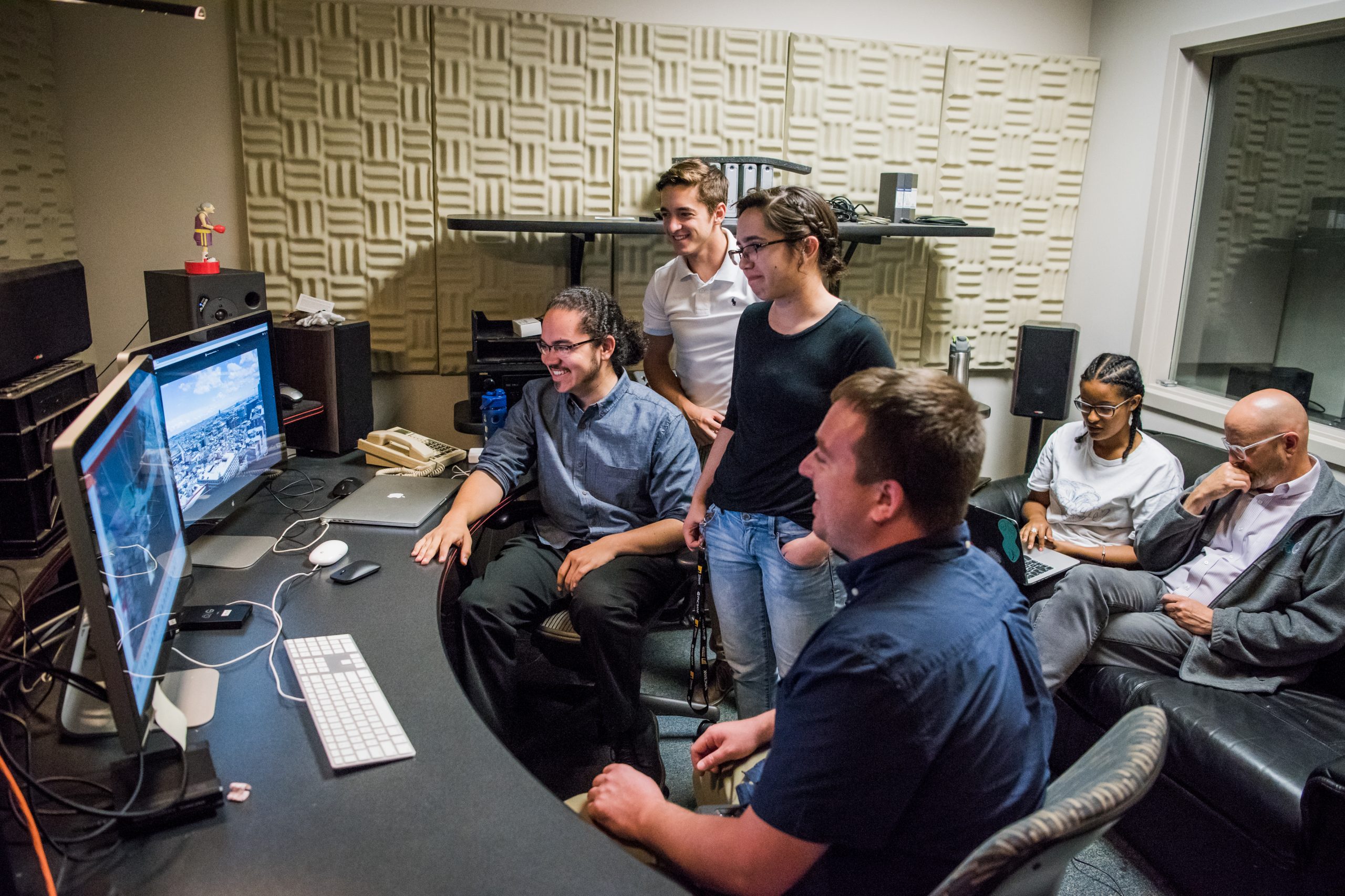UMBC has officially reached the nation’s highest level of research performance. The Carnegie Classification of Institutions of Higher Education today announced that UMBC has been placed into the category of doctoral universities with very high research activity, popularly known as Research 1 (or R1). UMBC is now ranked as one of only 146 R1 institutions nationally, including 107 public and 39 private universities.
“This is an amazing accomplishment by faculty, staff, and administrative leaders who have built a research culture that nurtures undergraduate and graduate students,” says President Freeman Hrabowski. “This milestone reflects our commitment to excellence across the disciplines, from the humanities to the sciences.”
Carnegie’s research activity index is based on many factors, including productivity in research and creative achievement, graduate education, and research expenditures across a broad range of fields. The university’s classification as an R1 university with comprehensive doctoral programs reflects the strength and diversity of UMBC’s research portfolio.
Reputation for research
UMBC’s research enterprise has grown steadily over the course of decades, ascending to new heights in recent years. Faculty secured more than $200M in new research awards in 2021 alone.
“This historic moment for our campus is an outcome of long-term strategic priorities and investments in the research and creative achievement community at UMBC—people, facilities, and programs,” says Karl Steiner, vice president for research. “It is essential to recognize that this reflects the work of our entire campus community, including engineering, natural sciences, social sciences, arts, and humanities. UMBC faculty from all fields successfully compete for research funding and national recognition at the highest level.”
Recent examples of high-impact research awards abound.
Yonathan Zohar, professor and chair of marine biotechnology, leads a new $10 million award from the U.S. Department of Agriculture to advance large-scale, sustainable land-based aquaculture—raising fish on land. This work has particular resonance at a time of global supply chain issues and sustainability concerns.

Kimberly Moffitt, interim dean of UMBC’s College of Arts, Humanities, and Social Sciences, is leading a partnership with Morgan State University and the University of Maryland, College Park (UMD) focused on developing a pipeline to higher ed leadership for arts and humanities scholars, particularly faculty from underrepresented groups. Patrice McDermott, vice provost for faculty affairs, is joining Moffitt in leading UMBC’s implementation of the project, supported through $3 million from the Andrew W. Mellon Foundation.

UMBC is also partnering with the UMD and the DEVCOM Army Research Lab (ARL) on a $68-million, five-year endeavor, funded by ARL, to strengthen the U.S. Army’s artificial intelligence technology. UMBC’s work on the project is led by Aryya Gangopadhyay, professor of information systems.

Among UMBC’s many interdisciplinary research initiatives is a new $72 million NASA award, with UMBC leading a national consortium supporting over 120 researchers.

An expansive mission
This new classification reflects UMBC’s reputation as a leader both in research and education. While these two areas are regarded by some universities as separate or even competing components of their institutional mission, at UMBC they are inextricably linked. Both graduate and undergraduate research contribute to the campus’s overall research endeavor, and UMBC sees the research experience as a critical component of undergraduate and graduate education.
Janet C. Rutledge, vice provost and dean of the Graduate School, firmly believes that intellectual breadth has been key to UMBC’s success. “The strength of our Ph.D. programs across all disciplines contributed both to our R1 classification and our graduate program portfolio being recognized as comprehensive,” she says.
Provost Philip Rous shares that the R1 designation “recognizes our commitment to our shared values, strategic priorities, and our mission as a public research university. This includes advancing research and creative achievement across disciplines and inter-disciplines, community-engaged scholarship, high-quality graduate education, and the authentic engagement of our undergraduate students in advancing knowledge.”

Prioritizing students and research impact
This research designation comes on the heels of UMBC’s joining the University Innovation Alliance, a consortium of public research universities focused on student success, and receiving the Carnegie Community Engagement Classification in recognition of a deep commitment to strengthening the bonds between campus and community. UMBC’s U.S. News rankings also recognize the university for national leadership in both innovation and teaching.

Maryland is fortunate also to be home to R1 universities UMD and Johns Hopkins University, as well as the specialized research powerhouse, the University of Maryland, Baltimore. The Carnegie Classification also recognizes both the University of Maryland, Eastern Shore, and Morgan State University as high research activity (R2) institutions. UMBC has established partnerships with each of these universities, as well as numerous others nationwide.
Shares President Hrabowski, “Now that we have reached this milestone, I encourage our community to pause and savor this moment. I look forward to seeing what UMBC achieves in the next chapter.”
Featured image: Members of the Race and Social Justice CoLab student research group in summer 2018, with Frank Anderson, LLC PhD candidate and then-associate director of the Shriver Center’s Choice Program (center foreground), and Lee Boot, research associate professor and director of the Imaging Research Center (right). All photos by Marlayna Demond ’11 for UMBC.
Tags: majoraward, Rankings, Research

